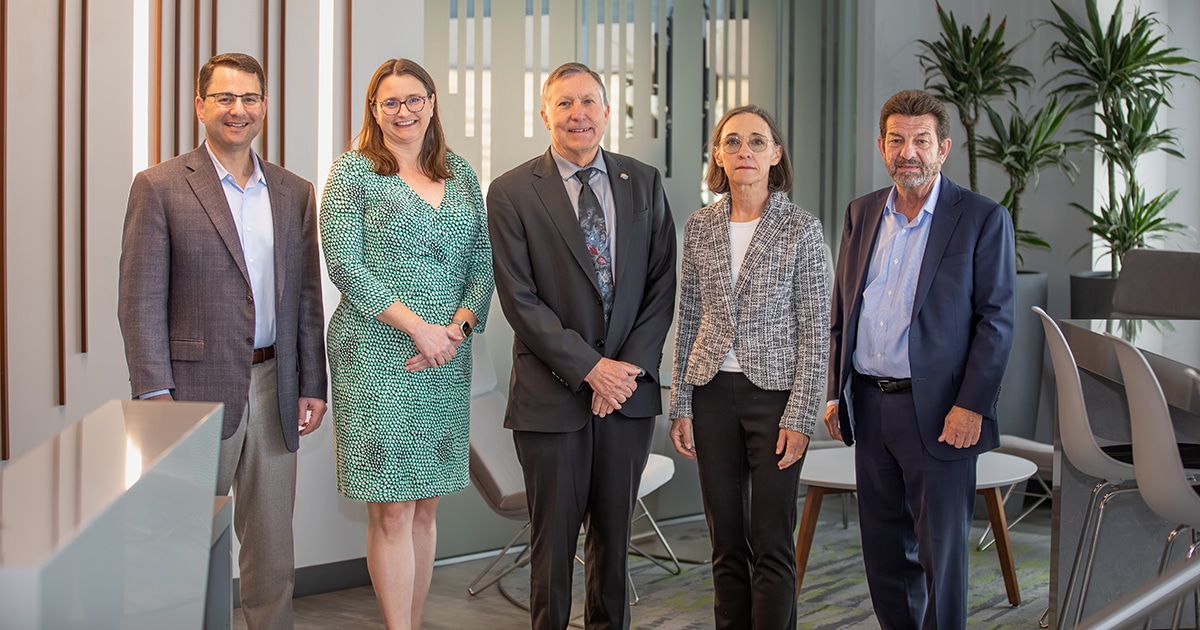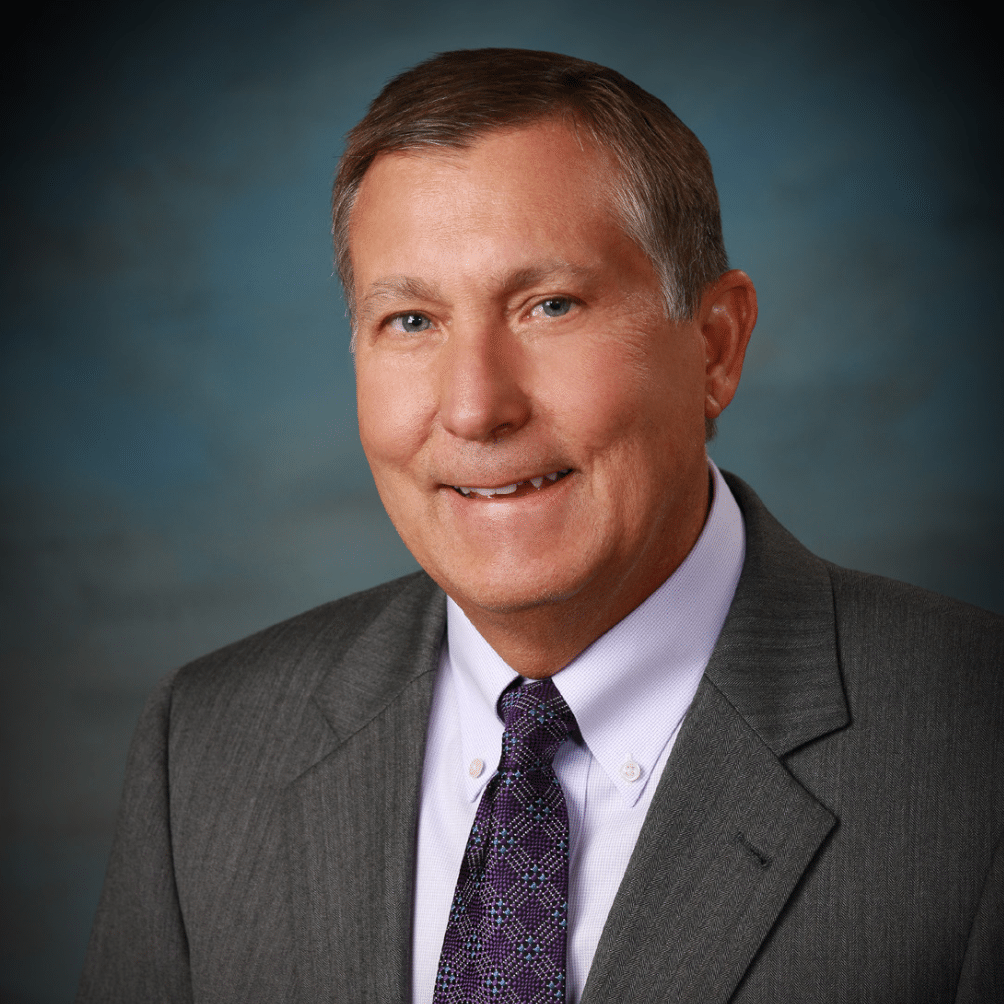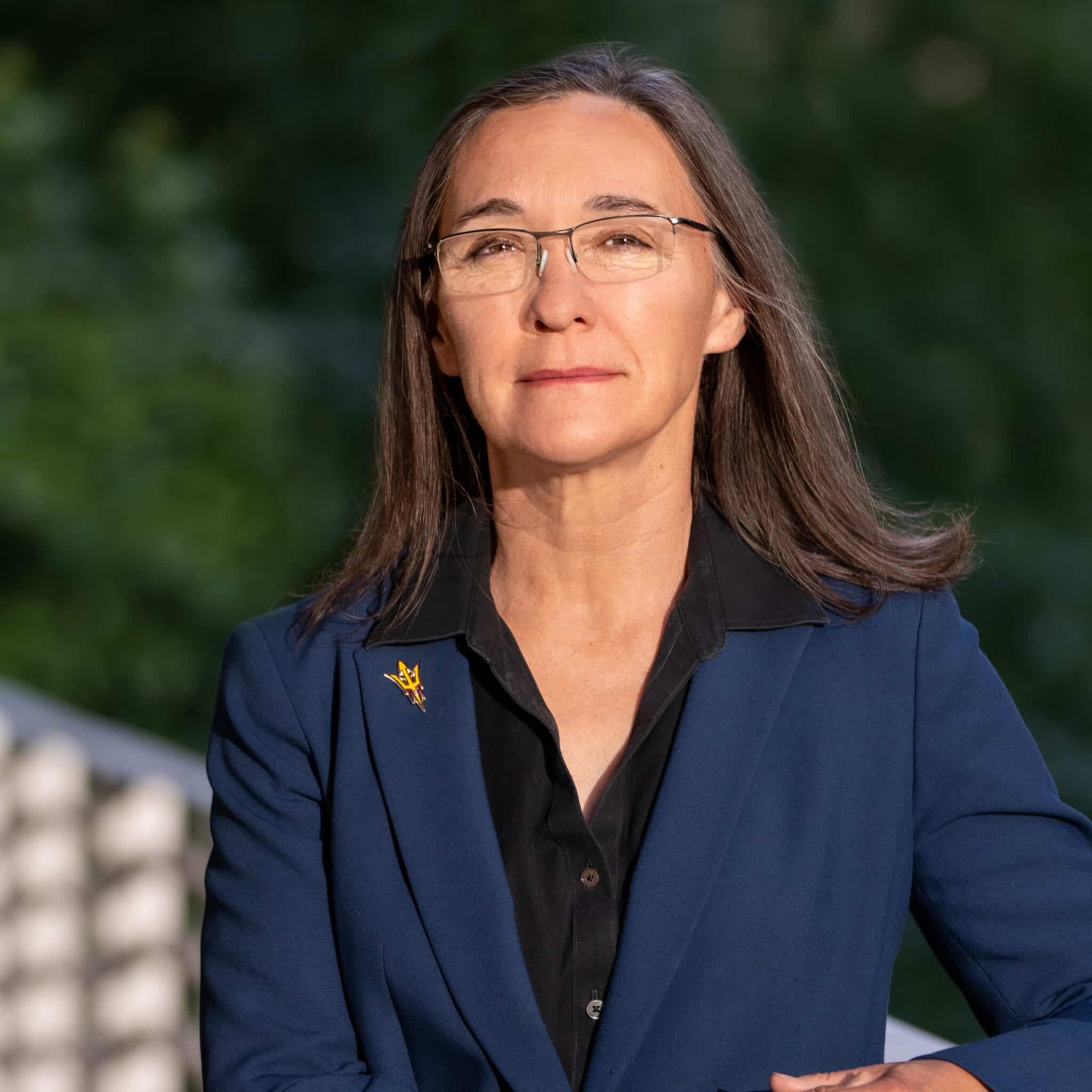

Ambassador Event: State of the Region
Published: 11/26/2025
How Arizona is evaluating water, energy and economic infrastructure to support continued momentum
Two decades of strategy and policy that facilitated regional growth and investment led to Greater Phoenix emerging as one of the top markets in the country. The region is no longer a second-tier market for advanced manufacturing and technology — when these companies are seeking expansion opportunities, part of the checklist is to do due diligence of the region.
With that growth comes the need for infrastructure enhancements. Arizona, which has long been known for having one of the most reliable energy grids in the nation and has spent centuries developing canals and water infrastructure, needs to continue to adapt to best build communities.
A panel of local energy and water experts joined the Greater Phoenix Economic Council (GPEC) for a discussion adjacent to the release of GPEC’s State of the Region report. The panelists were:
- Tom Buschatzke, Director, Arizona Department of Water Resources
- Ted N. Geisler, Chairman of the Board, President and CEO, Pinnacle West Capital Corp. and Arizona Public Service Company
- Jim Pratt, General Manager & CEO, Salt River Project
- Sarah Porter, Director, Kyl Center for Water Policy at Arizona State University’s Morrison Institute for Public Policy
- Kristen Stephenson, Senior Vice President of Research & Analytics, GPEC (Moderator)
“We need to make sure we’re thinking about the long-term and that our policy support matches the type of infrastructure that we’re putting in place,” Geisler said.
“When you have opportunities to talk to your elected leaders in Congress, make sure they understand this shouldn’t be a partisan issue,” Buschatzke said.
Arizona’s competitiveness tools
Maintaining and modernizing the infrastructure of Greater Phoenix will be critical to continued momentum of the region. Arizona offers a number of tools to support this growth.
Among these are the Infrastructure Improvements statute, the Qualified Facilities and Qualified Jobs tax credits, and the state’s unique Foreign Trade Zone (FTZ) allowances.
The Infrastructure Improvement statute reimburses communities 80% of the cost to put in public infrastructure, such as roads, utilities and wastewater treatment plants, paid for by the construction sales tax of the company utilizing these additions. Many companies evaluating Greater Phoenix are seeking large acreage, and these locations are not always shovel-ready with proper infrastructure.
This program, capped at $200 million, will soon reach its limit. It is important to expand this program to continue allowing for infrastructural improvements that drive company and residential growth.
Qualified Facilities program, designed for manufacturing companies or global, national or regional headquarters, is a refundable tax credit based on the number of people hired and capital investment of a company. Qualified Jobs, which sunset at the end of the FY25 legislative session, is broader in industry scope with nonrefundable income tax credits related to hiring and wages. The modernization and reauthorization of the program would continue to create high-value jobs.
FTZs treat companies within as if they are outside of United States customs, granting duty deferrals and exemptions, along with paying import taxes based on either materials or goods. Arizona has an additional allowance unique among all states: property tax expenditures are reduced from the Class 1 standard business rate of 16% to 5%.
“These bring such capital-intensive projects that a lot of companies still pay more in property tax than a comparable Class 1 user on that site,” Stephenson said.
Addressing water in Arizona
Water infrastructure will remain a key priority, particularly with the potential of a cut to the Colorado River supply in central and southern Arizona in 2027. This fight is not new — Arizona has been practicing water management and conservation since before it became a state.
Canals have existed since before 1450, when indigenous populations constructed nearly 500 miles of waterways in the Salt River Valley. Miners in the 1800s built more canals, and in 1902, the National Reclamation Act allowed reclamation projects to receive federal government financing. The next year, SRP was born, and not long after, construction of the Roosevelt Dam began.
In 1968, the Colorado River Basin Project Act authorized construction of the Central Arizona Project (CAP), a 336-mile system that moves Colorado River water. In 1980, the Groundwater Management Act established the legal and physical infrastructure to assure a 100-year water supply in Active Management Areas.
“We made a decision in 1980 to adopt the policy for our large urban areas of water before growth,” Porter said. “We are North America’s largest desert city, so it was understood that to make sure people see Greater Phoenix as a good place for investment, we have to do water right.”
SRP and CAP announced this month a project to connect their systems, allowing additional flexibility in water flow between their service areas and increase access toward Pinal County and Tucson.
“We’re starting to look at using the Central Arizona Project canal to move water beyond Colorado River water, something that has been in our future for a number of years,” Buschatzke said. “It’s been a long, arduous task, but that’s starting to come to fruition so we can deploy some of the water resources that are, for example, west of Maricopa County, or along the river.”
The closer intertie between the two providers is related to SRP’s work around limiting the impact of sedimentation from the Verde River, one of its two river supplies. Pratt said the “most economical approach” is to raise Bartlett Dam, which would give the provider an opportunity to “add enough that it will be an excess of what we need” and deliver it through CAP. He said there are cities interested in this potential.
“Other participants … are looking to buy into this, to be able to have water that you can serve for other purposes,” Pratt said. “They can use it with what we would call off-project or outside of our typical boundaries. And that’s a really big deal because that’s a new source.”
Other projects includes added flexibility for stored water with infrastructure like the Harquahala Groundwater Basin; water importation studies per the Water Infrastructure Finance Authority of Arizona’s recent announcement; and evaluation of advanced water purification. Additionally, EPCOR was awarded with Alternative Designation of Assured Water Supply (ADAWS) rights earlier this month.
Through these efforts, Arizona can maintain its efficiency, in which the state today uses about the same amount of water as it did in the 1950s despite a sevenfold increase in population and 15-fold economic increase.
“There’s not going to be another CAP, another big water project that brings in enormous amounts,” Porter said. “But we don’t need that. What we’ve learned over the last 40, 50 years, is that we, Greater Phoenix, can do a lot of population growth and a lot of economic growth on comparatively modest amounts of water, compared with what we needed in the 1940s and 1950s.”
Evaluating the Arizona electric grid model
The primary utility companies of Greater Phoenix, APS and SRP, are evaluating best methods to maintain grid reliability as more and more advanced manufacturing projects and data centers consider expansion into the region.
The two companies, as well as Tucson Electric Power (TEP), work closely on long-term planning and real-time asset operation, collaborating to ensure Arizona continues to consistently be rated among the most reliable states in the country.
Geisler listed three key principles to expand infrastructure while maintaining reliability and affordability.
The first, he said, is to make sure Greater Phoenix doesn’t take on more growth than the grid can handle. “The quickest way to be put in the same category, from an economic development process, as California and Texas, is to give people a reason to question [whether you can] count on reliable power,” Geisler said.
Secondly, APS has undertaken a mantra of growth paying for growth. Historically, the cost of expansion tends to be spread out among all users, but the utility companies are evaluating how that would threaten affordability and how to ensure large users for whom the infrastructure is built pays their fair share.
“The age-old concept of investing in large energy infrastructure and peanut-butter-spreading that cost across all customers needs to be disrupted," Geisler said.
Finally, the accessibility of energy for smaller users like restaurants and grocery stores cannot be taken for granted. As these neighborhood-building assets expand, they should not have to wait for energy.
“You have to thoughtfully manage how quickly you’re adding these large users, and that depends how quickly we get infrastructure in place,” Geisler said. “And we’re working as fast as we can.”
Natural gas makes up key infrastructure projects in the region. Transwestern Pipeline Co. announced in August a new pipeline that will serve utilities including APS, SRP, TEP and Unisource Electric Services. This pipeline would supply APS’ newly announced 2,000 MW natural gas plant west of Gila Bend.
“Part of our business entails taking a 30- to 40-year view. Not necessarily what is needed just over the next few years, or even what’s popular the next few years. But what’s necessary for the state over the next 30 to 40 years,” Geisler said. “We’re blessed with the largest power-producing plant in the country right now, Palo Verde. 100% clean, reliable, affordable. … That wasn’t a very popular decision at the time, and we’re all benefitting from it today. It’s that type of foresight, fortitude and thinking that we need now.”
Meet the panel
Tom Buschatzke
Director
Arizona Department of Water Resources
Ted N. Geisler
Chairman of the Board, President and CEO
Pinnacle West Capital Corp. and APS
Jim Pratt
General Manager & CEO
Salt River Project
Sarah Porter
Director
Kyl Center for Water Policy at ASU's Morrison Institute for Public Policy
Kristen Stephenson (Moderator)
Senior Vice President, Research & Analytics
Greater Phoenix Economic Council




